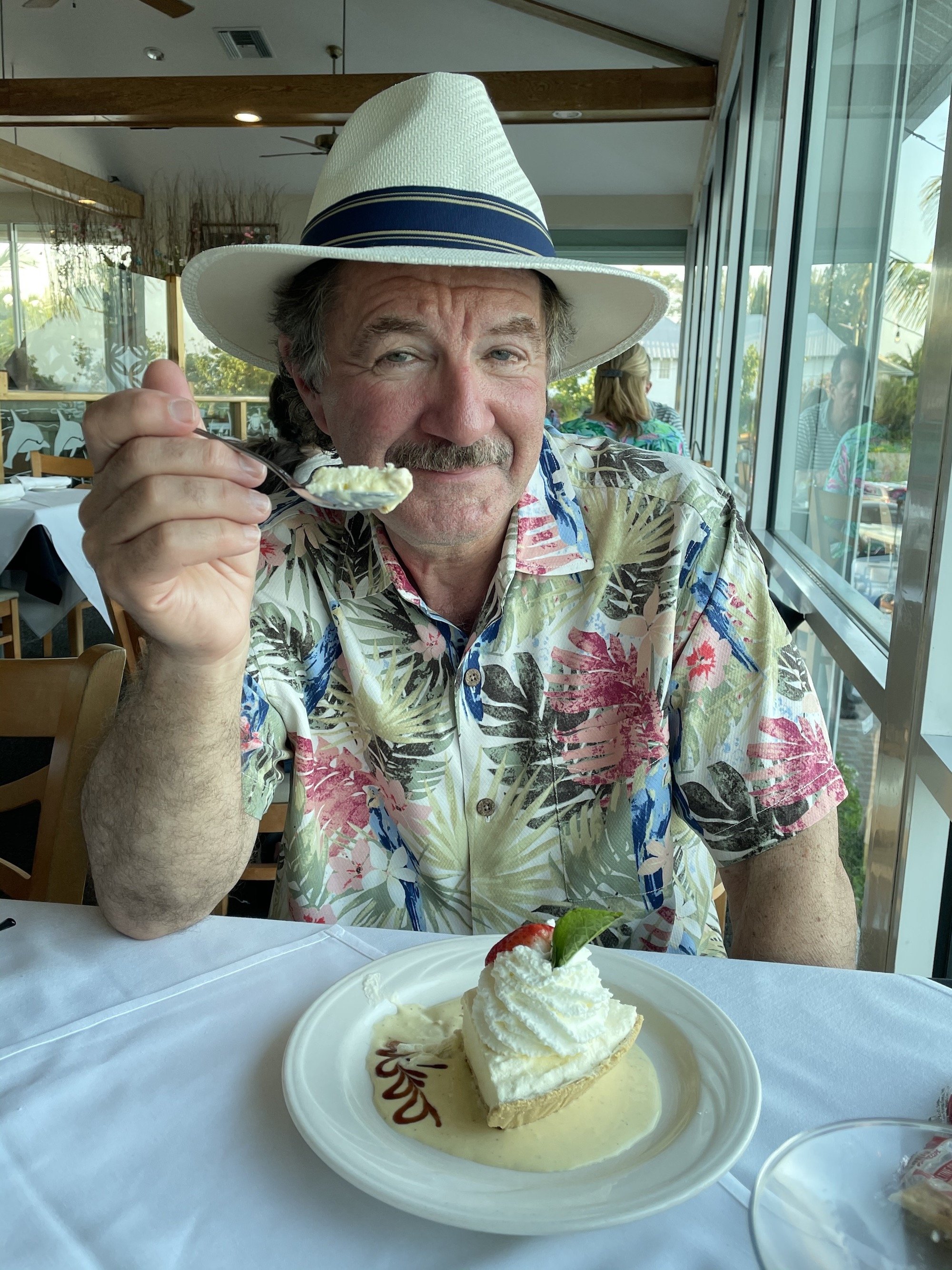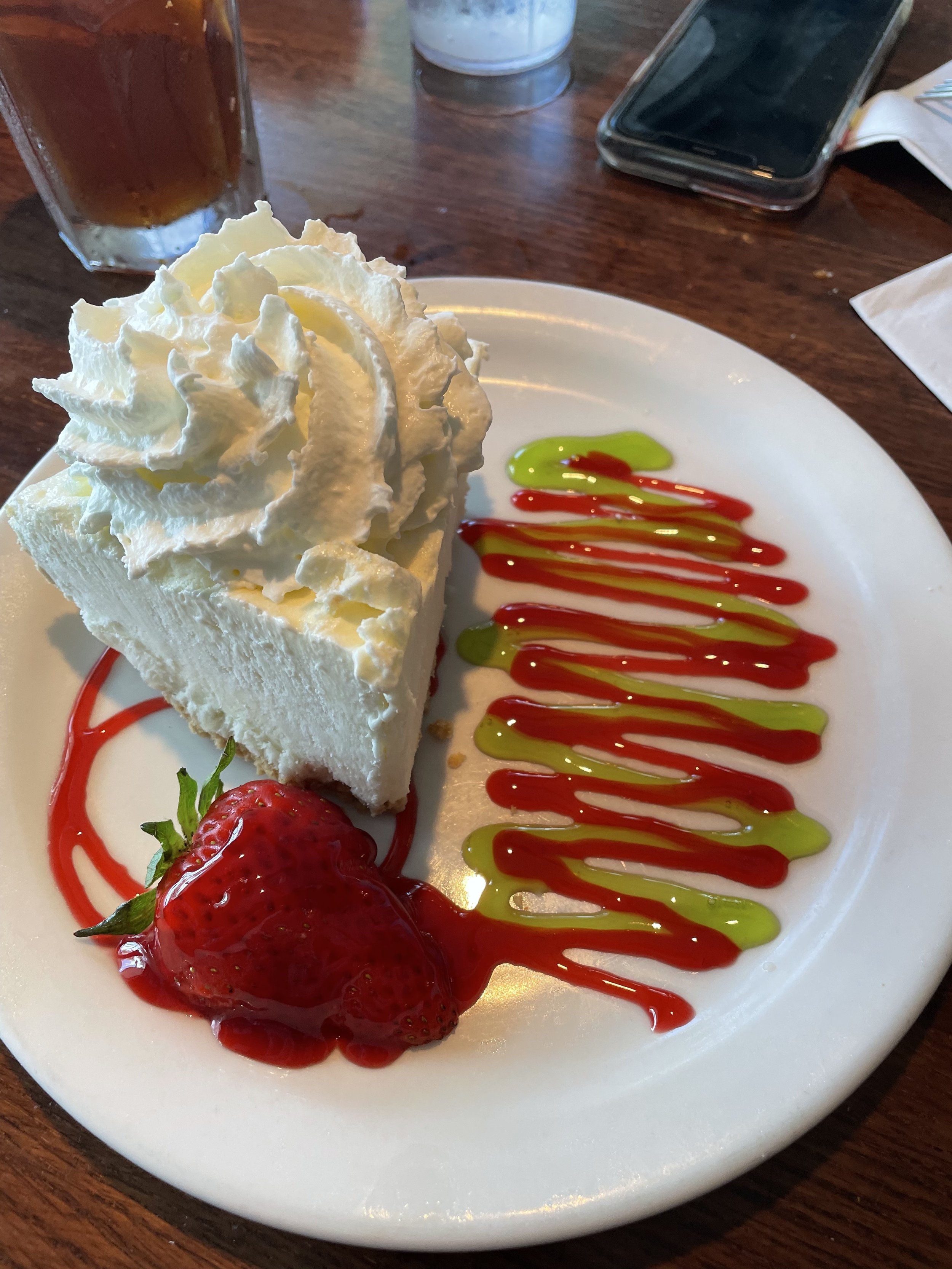The Sweet and Sour of Dental Decay
Pictured above: It’s no secret to anyone who knows him that Dr. Pfister has a love of sweets. The question is, can he still ward off decay?
Wow! This has truly been a great summer hasn’t it? Compared to the heat wave of the South and West — or the typhoon rains of the Northeast — Ohio has been spared a lot of record heat and precipitation…
But ask any adolescent and most parents, when the weather has been this good, man does the summer seem to fly by! As a child, once the Medina County Fair was over, those large orange vehicles that stopped at the end of my driveway in Hinckley weren’t far behind. This is one of the busiest months in an orthodontic office, as all the students from preschool to college-age are trying to get all of their last health checks in before fall.
This blog is a week overdue, as the idea for this one was the result of two dissimilar events happening a day apart…
The first was my going with my family to the Medina County Fair and having my annual culinary fair experience of a steak sandwich and a corn dog. As I have always said, never let the entrée get in the way of dessert! So I followed up the corn dog with a powder sugar and cinnamon elephant ear and washed it all down with a lemonade. It was amazing and just as satisfying as it has been since I was a child. When I got home, I brushed with my fluoride toothpaste and rinsed with a mouthwash (as I figure everyone does, after such a sugar and acid attack on one’s oral cavity)!
The next week, while going through my dental monthly journals, an article in Dental Abstracts by the honorable and worldly Pierre Fauchard Academy, stated that dental decay, though down in overall numbers, is still untreated in many older and younger populations throughout the world (and even in the U.S.) as you read this today!
They actually went on to state that dental decay is 5 times more common than asthma in children and currently affects 1 in 5 in the U.S. In fact, they went on to say that it is estimated that 3.1 billion people globally are affected with major impacts on their quality of life. Granted, in many parts of the world, the access to diagnostic equipment to determine the presence of decay is not available, nor are the individuals to treat decay available. But I really thought we were doing a better job on reducing the decay rate in the U.S!
While this thought was rolling around in my cerebrum, during this same week, another publication caught my eye — the American Dental Association, ADA, felt that the data from the recent International Association on Dental Research (IADR) Conference needed to be dispersed to its members, along with a 35-page monograph on breakthrough technology for fighting the caries (decay) epidemic. These individually wrapped monographs accompany our monthly journal every four to five years, when something groundbreaking has been revealed or modified and time has shown that it works. Thus, I have always opened them up and lightly read them for pertinent data for my patient and reader base.
But this time, the title of this monograph really hit me, “Arginine and the Healthy Oral Microbiome.” Here was one of the 19 biologically and commonly-found amino acids known since the 1970’s as a bacteria fighter, now being brought to the front-line in the battle of tooth decay…
This is right up there with the discovery of fluoride!
After reading the monograph twice, you’ll see why this blog was delayed, as it was very intense biology with more chemistry than I have read in the last decade or so.
I will attempt to give you a concise explanation that hopefully will shed some light on upcoming breakthroughs in the war on dental decay.
Beyond arginine, the ADA had some other old tips (but with better biological basis) on how and why we should take better care of our oral health. Let’s take a look at the findings.
We need a few simple explanations of several words to better understand how all this is related. Dr. Iain A. Pretty of Manchester England opened the Caries Symposium with a very insightful definition of dental decay. Paraphrased for understanding, caries is a dynamic, almost continual, process of demineralization and remineralization of the enamel that surrounds each of our teeth and the balance of which is influenced by a range of factors. This demineralization and remineralization process is done by the microorganisms of our oral cavity that live in a complex microbiome and grow and persist as a biofilm. This can also be viewed as a condominium tightly attached to our enamel.
Though the microbial composition of this biofilm varies at different times in our lives, the key bacteria involved in dental caries (decay), Streptococcus mutans, remains at a fairly constant population throughout our lives. Recent research has shown that usually this biofilm in various parts of our mouth is actually a benefit to the host, as it attacks foreign pathogens trying to enter our bodies. These foreign pathogens are pro-inflammatory microbes that can have negative outcomes to our overall health, and interestingly, specifically deleterious effects on our cardiovascular system! Please stay with me, as most of the above data we kind of knew already.
An interesting finding was how we can nutritionally affect this biofilm and positively affect our entire body… because one of the main bacteria in the biofilm is also responsible for the majority of our tooth decay!
The key bacteria involved in dental decay is s. mutans, which feeds mainly on sucrose (sugar). As it processes the sucrose, its waste products are acidic. The consumption of sucrose also helps the s. mutans to strengthen the biofilm matrices onto the tooth’s surface, but the bacteria can only do this in an acidic environment. As you follow this biological process, it’s not nuclear science — cut down the sugar and increase the oral pH and you are on your way to better dental and cardio checkups. But we have known that for decades...
My consumption of an elephant ear with a lemonade chaser is proof that it is hard to increase the pH just by limiting some of our very sweet and sour enjoyable factors! Enter arginine…
The data from the IADR Conference brought out, for the first time, the intricate biological process on how the amino acid, arginine, could be effective in reducing tooth decay. It has been known that s. mutans can utilize arginine as a substrate, food, like sucrose. But with recent research findings, there was one significant difference in the ingestion of arginine over sucrose. Instead of acidic waste after consumption, s. mutans converted arginine into a molecule of ammonia, which significantly increases the pH to one that is more basic.
This biochemical increase in pH has a twofold effect on the oral cavity, especially on the biofilm on the tooth’s surface. The increase in pH facilitates an increase in remineralization of the tooth’s surface and produces a basic environment that benefits protective microbes and makes a less favorable environment for acidic caries producing s. mutans. There is also speculation that the higher pH environment loosens the attachment of the biofilm to the tooth’s surface, making it easier to remove with brushing.
I hear some of my readers asking, “What are the negative effects of arginine?”
Depending on the amounts, some users may get nauseous. But, being one of the 19 naturally occurring amino acids, negative effects on the body, though needing more research, are expected to be minimal. The holistic crowd has downplayed fluoride for decades, as being harmful to our systemic systems, while being positive for reducing demineralization of the tooth’s surface. As an aside, the fluoride to calcium bond of enamel is nearly three times more insoluble than the normal calcium-calcium bond.
Personally, I feel we need as many approaches as possible to reduce decay and to maintain our proper oral health.
Scientists at the IADR Conference felt the same way; and so several papers were presented on research combining the two biologically different modes of operation of fluoride and arginine in combination. Interesting, synergy!
As expected, the more neutral higher pH environment produced by arginine set the stage for better utilization and uptake of the fluoride into the tooth’s surface, especially as the biofilm was removed. The two chemicals, when used together, do not have a synergistic effect. The increase in pH from the arginine just provides a more suitable environment for the remineralization of the enamel surface by the fluoride.
Chemically, arginine and fluoride are great to have on our side in this battle against tooth decay. But could we add one more non-chemical weapon that has been shown to be equally as effective in reducing decay?
Hint: this non-chemical weapon is an action that helps remove or disrupt the biofilm and expose the s. mutans on the tooth’s surface. Drum roll please… I’m talking about brushing and flossing!
This third weapon in our oral health arsenal is something we have known for years; and research has shown, beyond any reasonable doubt, that brushing and flossing move the s. mutans out of the mouth… and the decay rate drops precipitously. Nothing replaces a good brushing twice to three times a day.
But as we mature, I’m seeing more and more gum recession with over-exuberant brushing. Gentle brushing is great, but like everything else in life, keep it to moderation. Vigorous scrubbing after every meal will reduce decay, but that healthy tooth will fall out of your mouth due to loss of gum tissue. Remember this… as the gum recedes, so does the bone support (and neither have been able to regenerate to any meaningful amount once gone).
You would be shocked at how many people need periodontal grafting before Invisalign over 45 years of age! Sonicare 2.0 and several other electric toothbrush companies have produced a rotary brushing head with a water pix style jet to flush the bacteria and biofilm away once loosened with the brush. These have been great time-savers and very efficient in biofilm removal, but again — don’t try to see how high you can turn up the water pressure. We want to remove the biofilm and massage the gum tissue, not remove both. The electric toothbrush research has shown that gentle circular brushing is better for the gum tissue than the back and forth hacksaw-style my generation was taught.
In summary…
We can affect the bacterial colonies in our mouths by adjusting the pH of our mouths through nutrition and arginine toothpaste.
We can strengthen our enamel through fluoride, the removal of the biofilm (by brushing and flossing), and with regular visits to our dentists.
I have been in people’s oral cavity for over 35 years and, like some backyards, there are those that are well attended to and others that are… well… in need of attention.
The old saying of “We are what we eat” has never been more true than when looking at our oral cavity. Let’s be honest — it is the entrance, or foyer, to our body!
Most weight-loss coaches will also tell you, “You are the only one who can change your habits.” But if I’m being honest, all the research in the world is not going to stop me from eating elephant ears, or funnel cakes for that matter. And I love lemonade!
But when I indulge, I go home and clean up the yard.
Never go to bed after consuming sucrose in a liquid or solid state without brushing. Your oral cavity will thank you with years of great health and a pleasing smile.
Please let me remind you to attend a Farmer’s Market every Saturday morning for some of this season’s finest produce. The corn this year is super sweet and only contains 3 grams of sugar per ear. The cantaloupe is also at its peak this month, again sweet, but low in sugar per serving.
And need I remind you, the evenings have been getting cooler. I hope your souls have been summoned to be warmed and inspired by the crackling flames of an end-of-summer bonfire.
Just don’t forget to brush after the s’mores,
Dr. Pfister




